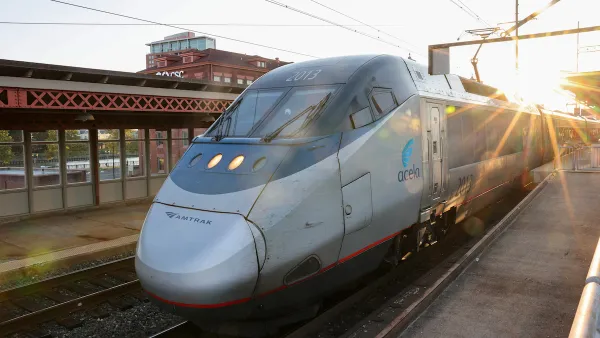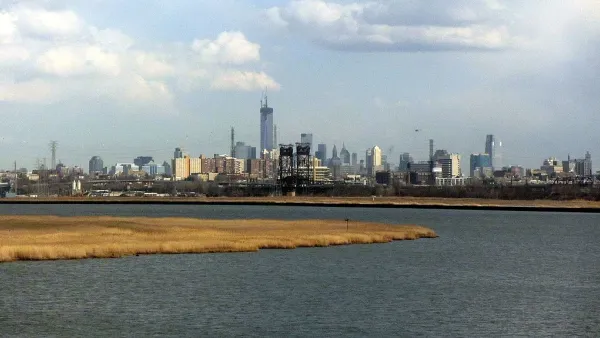Milton Lindsay examines America's efforts to build a national system of high-speed trains and finds mixed results in the nation's eleven intended corridors.
Outside of the existing Northeast Corridor (call it "high-speed" or not) and the just-beginning start-up of California's high-speed rail network, uneven progress has been made on the rest of the nation's designated corridors.
As Lindsay reports, each corridor comes with a completely different set of successes and challenges. For example, on the much-championed California corridor, "California lawmakers approved funding for the first phase of the high-speed rail network. Friday's bill secures the $8 billion needed to begin work on the 130-mile section of track in the Central Valley, which will run from Madera to Bakersfield. Construction on this initial phase of the high-speed rail system is still expected to begin late 2012."
In the Northeast Corridor, "development of an enhanced high-speed rail corridor in the Northeast would cost $151 billion. Amtrak's report also set completion goals for the projects. By 2020, it says it hopes to reduce travel times from Philadelphia to New York to 62 minutes (and to 37 minutes by 2030). Additionally, Amtrak says it will acquire 40 more Acela trains by 2015, which will increase its high-speed service by 40 percent," reports Lindsay.
Still, development has either remained slow or completely stalled in most other corridors. Most projects lack comprehensive funding strategies and timetables for their construction. Of the Florida corridor, including Orlando, Tampa, and Miami, Lindsay states "[t]his project seems like it is pretty much dead." Similarly, political pressure in the South Central corridor have advocates turning to the private sector for funding.
Solutions for advancing high-speed rail include private enterprise, such as in the South Central corridor between Houston and Dallas/Ft. Worth, and using funds for the improvement of existing rail right-of-ways, as in the Chicago Hub Network and Pacific Northwest corridor.
FULL STORY: America and High-Speed Rail: The Progress So Far

Analysis: Cybertruck Fatality Rate Far Exceeds That of Ford Pinto
The Tesla Cybertruck was recalled seven times last year.

National Parks Layoffs Will Cause Communities to Lose Billions
Thousands of essential park workers were laid off this week, just before the busy spring break season.

Retro-silient?: America’s First “Eco-burb,” The Woodlands Turns 50
A master-planned community north of Houston offers lessons on green infrastructure and resilient design, but falls short of its founder’s lofty affordability and walkability goals.

Test News Post 1
This is a summary

Analysis: Cybertruck Fatality Rate Far Exceeds That of Ford Pinto
The Tesla Cybertruck was recalled seven times last year.

Test News Headline 46
Test for the image on the front page.
Urban Design for Planners 1: Software Tools
This six-course series explores essential urban design concepts using open source software and equips planners with the tools they need to participate fully in the urban design process.
Planning for Universal Design
Learn the tools for implementing Universal Design in planning regulations.
EMC Planning Group, Inc.
Planetizen
Planetizen
Mpact (formerly Rail~Volution)
Great Falls Development Authority, Inc.
HUDs Office of Policy Development and Research
NYU Wagner Graduate School of Public Service



























